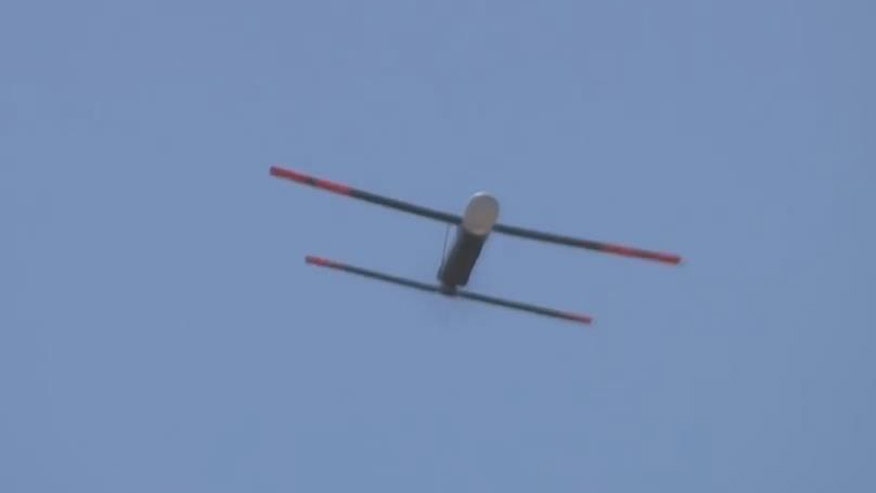
Screenshot from the Office of Naval Research YouTube video.
Just like how locust swarms can cause devastating natural disasters, the U.S. Navy’s Low-Cost UAV Swarming Technology (LOCUST) drones could devastate adversaries.
A fitting acronym, the Navy’s LOCUST is a new revolutionary technology where swarms of compact drones can work together and execute missions autonomously.
Drone swarms could overwhelm threats to the military.
A desert locust swarm can total over 400 square miles large, 160 million strong per square mile and each locust can eat its weight in plants every day. Swarms can also travel extraordinary distances even from Africa to northern Europe — no wonder locust swarms have been feared throughout history.
The Office of Naval Research recently demonstrated some of their swarm’s capabilities. They launched their Coyote UAVs that can be used for various types of LOCUST swarm missions.
Approximately three feet long, Coyote drones weigh about 12 pounds and can fly for about 90 minutes. They can reach a maximum speed of 85 knots. After launch, Coyotes wings unfold to fly. Coyotes were flown into Hurricane Eduoard last summer to gather information.
The demonstration revealed that nine drones could synchronize and execute formations in flight all on their own.
How does it work?
The ONR says that the LOCUST program features a tube-based launcher that sends the drones into the air one after another.
LOCUST leverages big advances in how drones can share information with one another. The drones can take action autonomously working together without humans. They can collaborate and execute offensive or defensive missions.
Swarms don’t just launch from ships, but also from aircraft or large drone platforms. They can also launch from tactical vehicles or ground-based installations.
While the drones are autonomous, the ONR stressed that humans will actively monitor missions and be on hand to step in and take control.
“This level of autonomous swarming flight has never been done before. UAVs that are expendable and reconfigurable will free manned aircraft and traditional weapon systems to do more, and essentially multiply combat power at decreased risk to the warfighter,” said ONR program manager Lee Mastroianni in a press release.
There are a number of advantages to drone swarms. Drone swarms could take on missions to free up sailors and U.S. Marines for other work.
The Navy says that hundreds of these small UAVs will cost less than a single tactical aircraft, and lowering costs is another great advantage.
Deployment
UAV swarms could provide sailors and Marines with a significant tactical advantage.
Last year, the Navy revealed drone boats that could swarm a threat vessel and overwhelm it. The drone boats would leverage technology developed by NASA for use on its Mars rover. The swarms could also protect Marines and sailors on board larger ships.
Next year, the Navy aims to launch 30 drones from a ship in rapid succession.
Ballet dancer turned defense specialist Allison Barrie has traveled around the world covering the military, terrorism, weapons advancements and life on the front line. You can reach her at wargames@foxnews.com or follow her on Twitter @Allison_Barrie.

